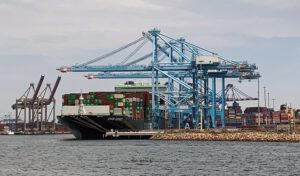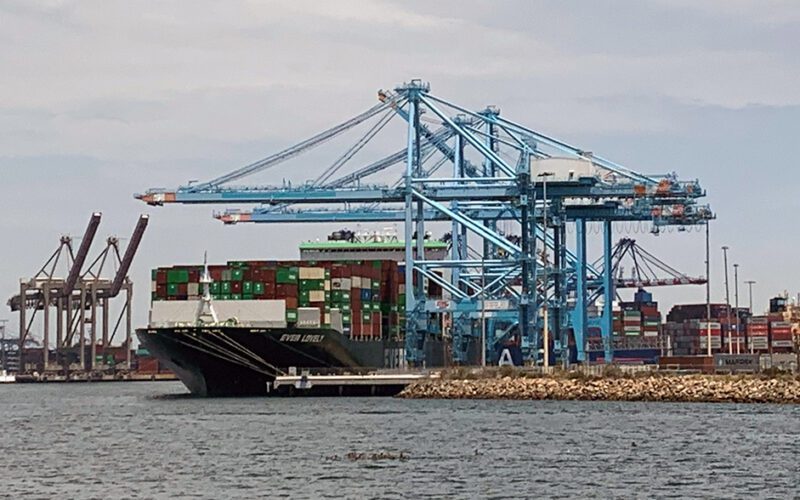
The Los Angeles and Long Beach seaports saw cargo volumes for February drop year over year, according to newly released data by the two seaports.
Last month, the Port of LA moved 487,846 TEUs, a 43% drop from February 2022, an all-time record, the port said March 17. Loaded imports during the month fell 41% to 249,407 TEUs, while loaded exports dipped 14% to 82,404 TEUs year over year. Empty containers also dropped 54% to 156,035 TEUs, POLA data show.
So far in 2023, Los Angeles said it has handled 1,213,860 TEUs, a 30% drop when compared to the same time period last year, when the port moved 1,723,360 TEUs.
“February declines were exacerbated by an overall slowdown in global trade, extended Lunar New Year holiday closures in Asia, overstocked warehouses and a shift away from West Coast ports,” POLA Executive Director Gene Seroka said. “While we expect more cargo moving crossing our docks in March, volume will likely remain lighter than average in the first half of 2023.”
Meanwhile, the Port of Long Beach handled 31.7% less cargo last month than it did a year ago with 543,675 TEUs, according to date released March 14. February 2022 was Long Beach’s busiest February ever.
Imports last month fell 34.7% to 254,970 TEUs, while exports dropped 5.9% to 110,919 TEUs year over year. Empty containers also fell 38.3% to 177,787 TEUs.
“Trade continues to normalize following the record-breaking cargo numbers we saw at the start of last year,” POLB Executive Director Mario Cordero said. “We are investing in infrastructure projects that will keep us competitive as we collaborate with industry stakeholders to focus on trade volume.”

